Ceremony of Novitiation or Shin Pyu Ceremony, one of the most important religious ceremonies for Theravada Buddhism
2018-09-01edit Mon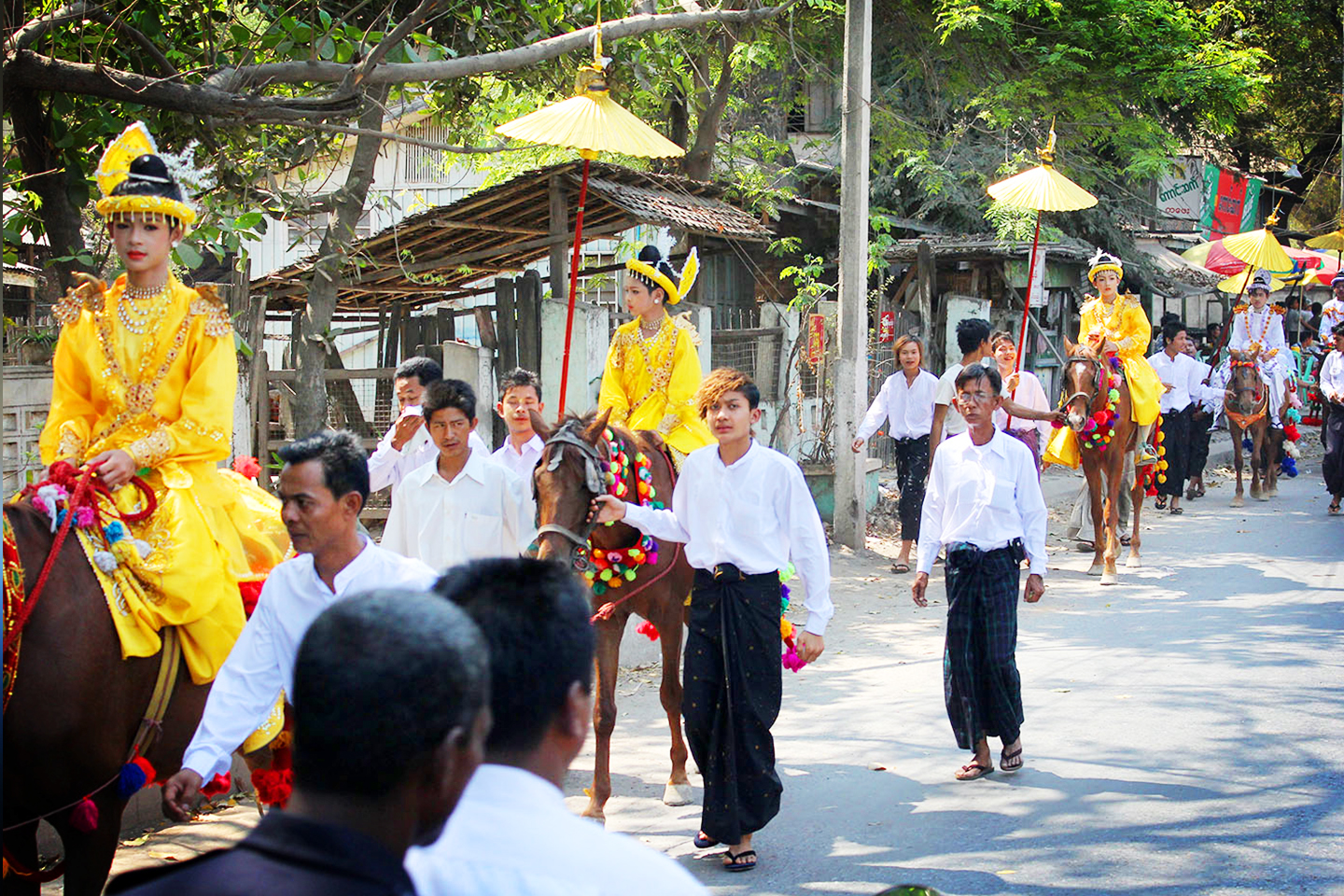 (Source: wikimedia)
(Source: wikimedia) 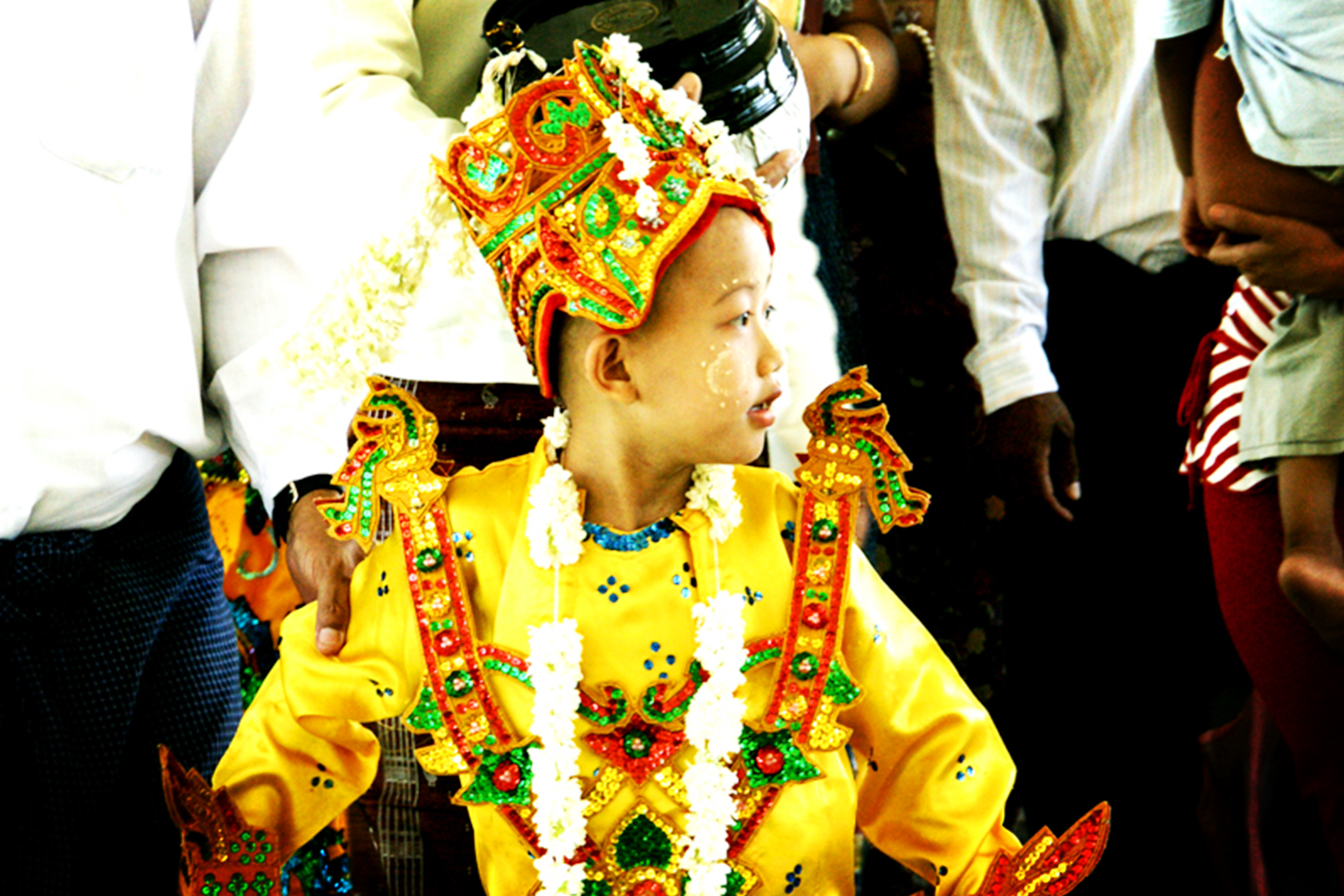 (Source: wikimedia)
(Source: wikimedia)
Ceremony of Novitiation (known as “Shin Pyu Ceremony” in Myanmar language) is one of the most important traditional and religious ceremonies for Theravada Buddhism because around 90% of the populations are Buddhist in Myanmar. It is the celebration of a young boy, normally under 20 years old, becoming the novice to enhance his and his parent’s Karma (Merit) and it is a kind of blessing & pride for the whole family. Myanmar Buddhist people believed that this event is not only very imperative duty for the parents to their boy but also the good opportunity to pay back the gratitude from the boy to their parents by being a novice. Every man should spend some period of time in a monastic life at least once in his lifetime according to the Buddhist beliefs in Myanmar. There are no exact age to become a novice and no exact seasons of the month to celebrate the ceremony. But the Ceremony of Novitiation is mostly held from March to May because the schools close for the summer vacation and typically have long public holidays during these months.
Procedure and Tradition of the Ceremony of Novitiation
The Novitiation Ceremony has a certain procedure to follow. There usually have number of boys who will become the novices on that day because the families combine the events to arrange together to share the expenses and try to make a thriving ceremony. The boys can be the siblings or the relatives or the friends or the children from a neighbor family. The auspicious date for the ceremony decides upon the discussion with the child’s parents and the abbot of the monastery. After that the family invites the people (including the relatives, the neighbors and friends) who expect to come and join in the ceremony. 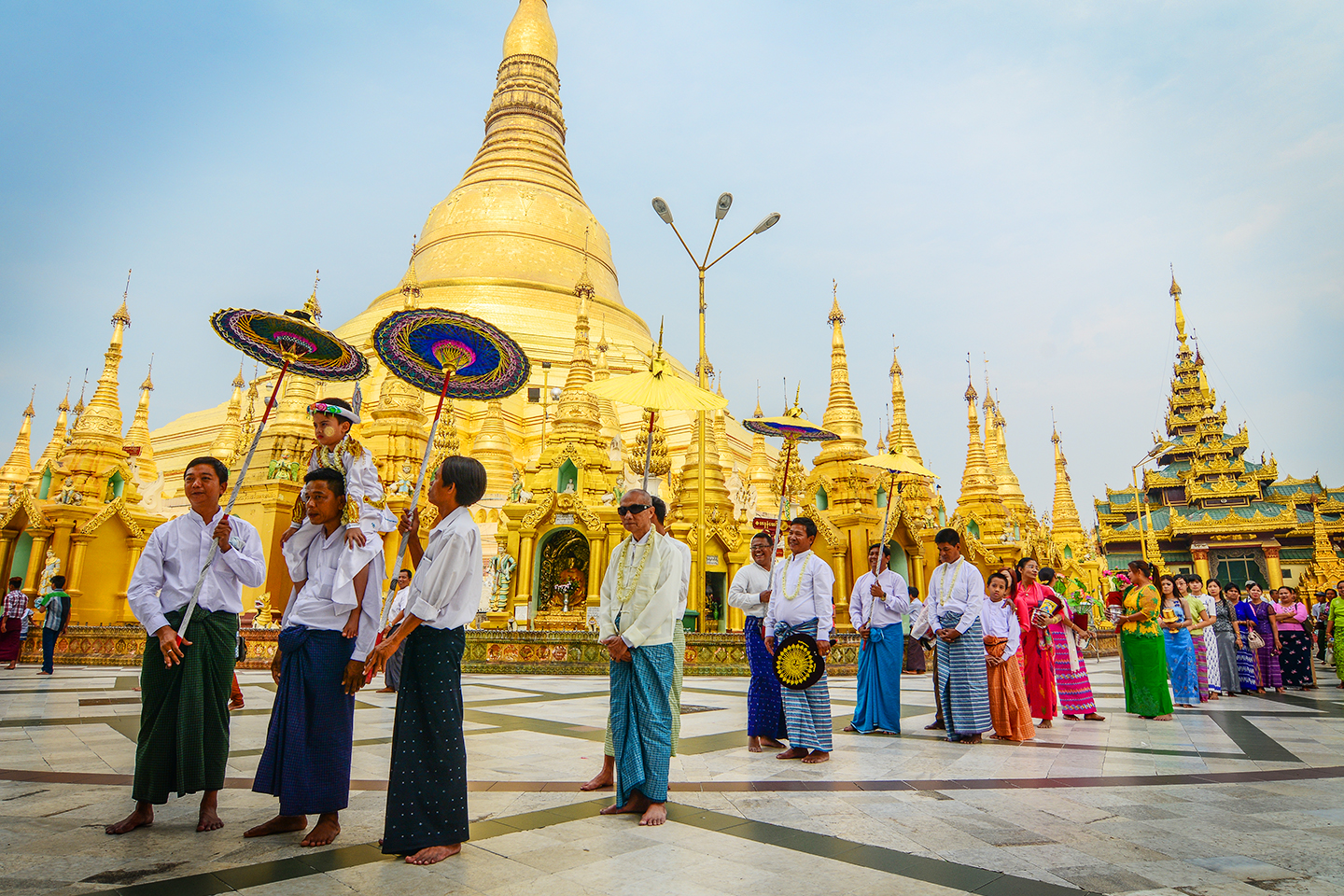 (Phuong D. Nguyen/Shutterstock.com)
(Phuong D. Nguyen/Shutterstock.com)
On the ceremony day, the people gathering at the monastery or the family’s home in the morning and then pay a visit to the most well-known pagoda (people go to Shwe Dagon Pagoda in Yangon) to pay respects and to let the Nats (Spirits) know that they didn’t get abandoned and welcome to share the good merits with them. The people usually celebrate the ceremony in an extravagant manner like making a grand procession around the town (known as “Shin Laung Hle Pwe” in Myanmar language) with the cars in the big cities or with the horse (sometimes elephant or cow cart) in the rural areas. The boys who plan to become a novice usually dress up in the style of Burmese royal costumes which is splendid silks embroidered with gold with jewelry, a sash, holding a double edged sword and wearing a crown or gold headdress as a King or a Prince. All of the family members, relatives and the guests wear the Myanmar traditional dress nicely for the ceremony. In some ceremony, the people hire a Burmese orchestra band or musical troupe to accompany to the procession and entertain the guests if they are affordable for this. 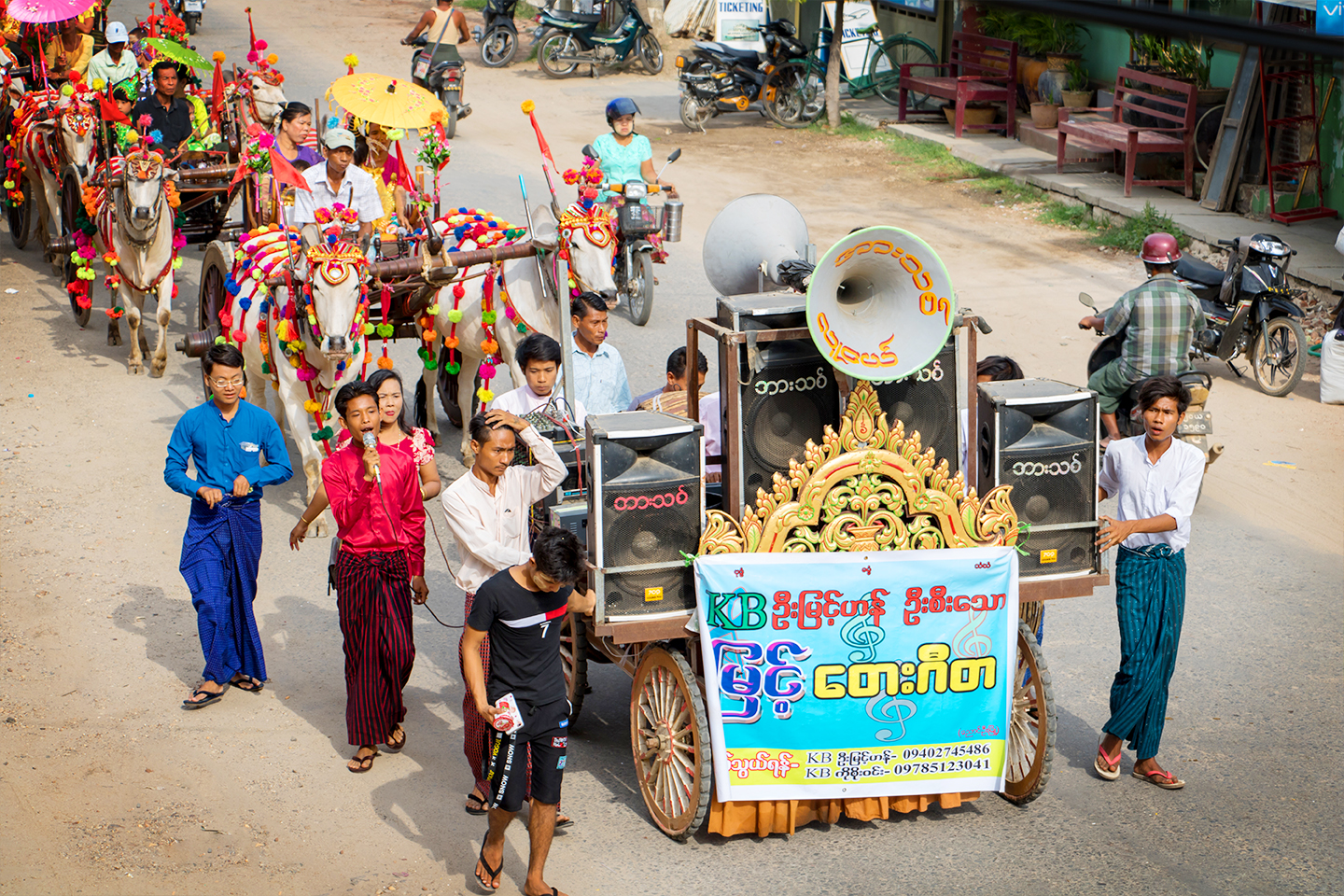 (Milkovasa /Shutterstock.com)
(Milkovasa /Shutterstock.com)
Traditionally, the royal Myanmar drum (known as “Byaw”), which is kind of announcing the time of departure, leads the procession starting with the most elderly men who brings a flower vase. The novice-to-be (known as “Shin Laung” in Myanmar language) ride a horse or elephant or cars while in procession but have to walk at the pagoda sheltering with the gold umbrella over his head. The family members follows behind the novice-to-be, the mother carries the monastic robes and the father carries the eight monastic requisites (known as “Pareikkhara Shippa” in Myanmar language), the sister or young maidens carry the ornamental boxes of betel (known as “Kun Daung Gaing” in Myanmar language) and the bouquet or flower basket (known as “Pan Daung Gaing” in Myanmar language). The line usually leads by the main donar and the other family members, relatives and other guests follow behind in order. The Myanmar orchestra band headed by a man with a moustache called U Shwe Yoe holding a parasol and his partner Daw Moe dancing cheerily follow from the back. The ceremony will be as grand as they can afford. 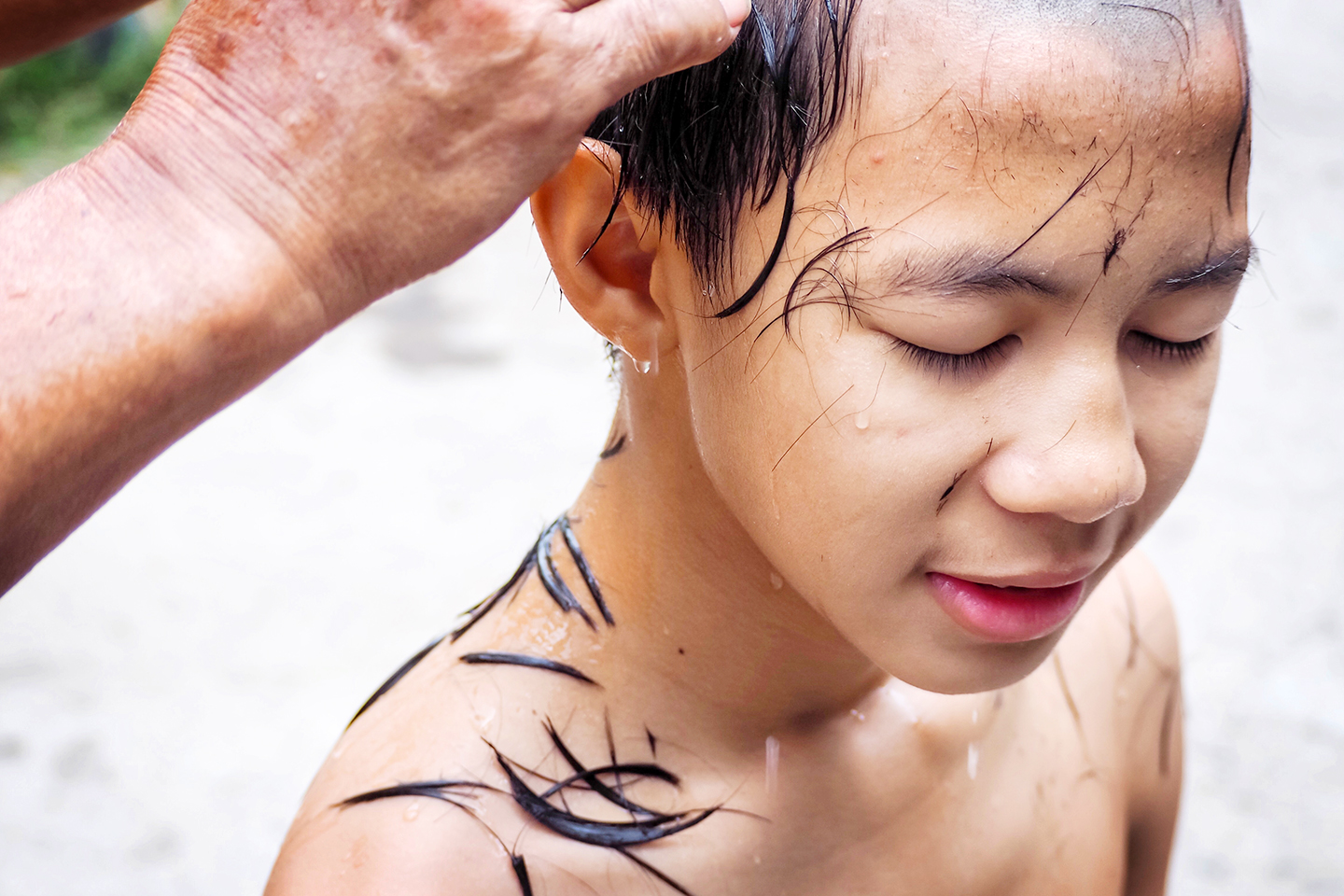 After paying respect to the pagoda, all go directly to the designated monastery. The monk explains the benefits of being a novice, the transaction of the ceremony and asking the permission from the family members and few questions concerning with the basic monastic discipline. After that the boy’s hair is shaved by the monk (known as “San Cha” in Myanmar language) while the parents kneeling together with him and holding a piece of white fabric in front of the boy to collect his hair. He asked for the monastic robes from a monk (known as “Thingan Taung” in Myanmar language) to be novitiated by making the affirmation of the Ten Precepts and received the alms bowl (known as “Tha Beik” in Myanmar language) and palm-leaf fan (known as “Yat” in Myanmar language) from his parents. The boys wear the monastic robes with the help from the monk and officially becoming the novice (known as “Koyin Lay” in Myanmar language). The invited guests are hospitalized with the light meals at the monastery on the same day. All the family members and the guests go back home after the ceremony but the novice have to stay in the monastery for couple days (the time durations may vary upon the willingness). On the other day, the host family makes a donation and feasting for the monks and the invited guests at the monastery before noon. The ceremony is being modernized nowadays but the ritual ceremony can still be experienced in the rural area and in some big cities.
After paying respect to the pagoda, all go directly to the designated monastery. The monk explains the benefits of being a novice, the transaction of the ceremony and asking the permission from the family members and few questions concerning with the basic monastic discipline. After that the boy’s hair is shaved by the monk (known as “San Cha” in Myanmar language) while the parents kneeling together with him and holding a piece of white fabric in front of the boy to collect his hair. He asked for the monastic robes from a monk (known as “Thingan Taung” in Myanmar language) to be novitiated by making the affirmation of the Ten Precepts and received the alms bowl (known as “Tha Beik” in Myanmar language) and palm-leaf fan (known as “Yat” in Myanmar language) from his parents. The boys wear the monastic robes with the help from the monk and officially becoming the novice (known as “Koyin Lay” in Myanmar language). The invited guests are hospitalized with the light meals at the monastery on the same day. All the family members and the guests go back home after the ceremony but the novice have to stay in the monastery for couple days (the time durations may vary upon the willingness). On the other day, the host family makes a donation and feasting for the monks and the invited guests at the monastery before noon. The ceremony is being modernized nowadays but the ritual ceremony can still be experienced in the rural area and in some big cities.
Obligations of the novice and their daily routine
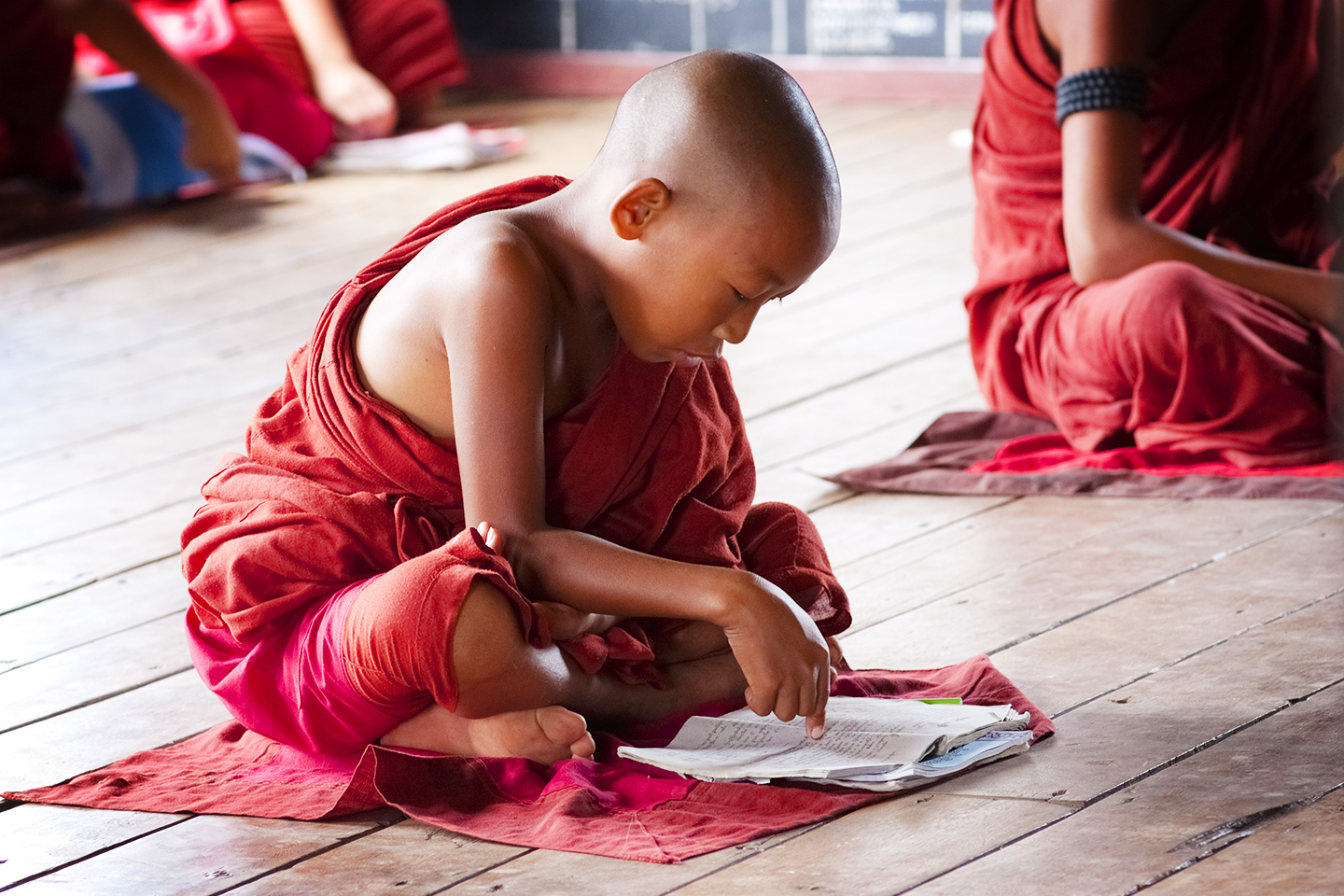 (Phon Promwisate/Shutterstock.com)
(Phon Promwisate/Shutterstock.com)
The novice has to keep the Ten Precepts and obeys the 75 Sekhiyas (the rules concerning with behavior, discipline, self-restraint and dignity). The novices must learn the Buddha’s Scriptures, all the things concern with Buddhism and practicing the meditation as their daily routine. The monks and novices have to get up very early in the morning to pay the homage to the Lord Buddha, sharing the merits, do the chanting and practicing the meditation. They usually have their breakfast around 5am in the morning. 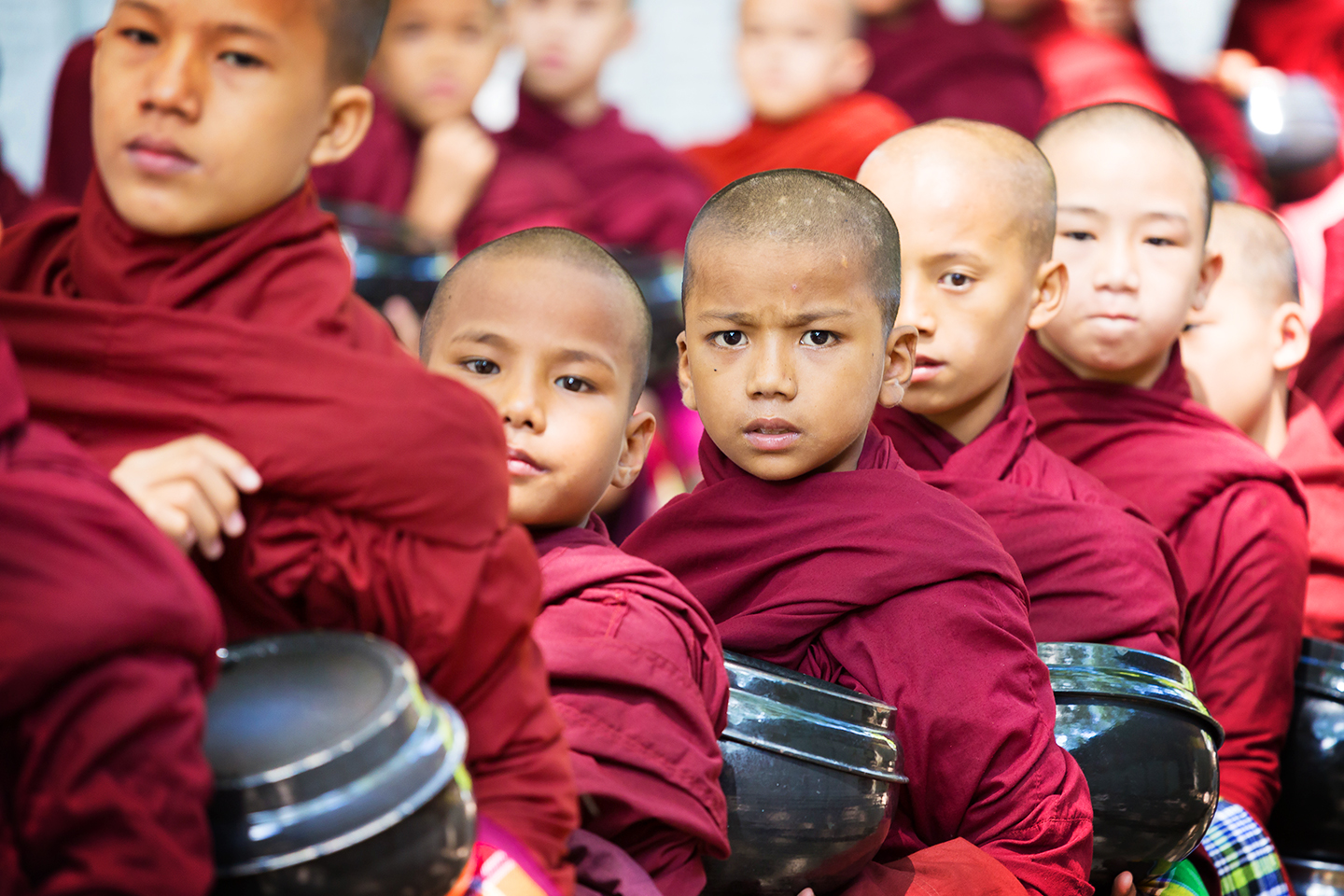 (gnomeandi/Shutterstock.com)
(gnomeandi/Shutterstock.com)
Around 9am in the morning (the time may vary upon the monastery), all the monks and the novice get ready for the daily alms round. The monks are lining up from senior to junior level in a long procession to the surrounding area of the monastery for the alms round. Monks and the novices have to downcast the eyes to the ground (shouldn’t look around to the left or right), holding the alms bowl by walking slowly and solemnly with the bare foot. The people offer their affordable things such as foods, snacks, drinks, medicine and other daily products to the monks (known as “Thein Sin Laung” in Myanmar language) and there will be some acolytes accompanying to assist the monks. The Buddhists people believe that it is one of the grateful opportunities to accumulate their merits and enhance the luck by offering. That’s why the daily alms round has mutual advantage for the monks and the donar. The monks, novices and acolytes go back to the monastery after the alms round and the monks have to finish their lunch before noon (normally around 11am). The novices learn the Buddha’s Scriptures, all the things they should know concerning with Buddhism and practicing the meditation in the remaining time of the day.
Additional information related to the Novitiation Ceremony
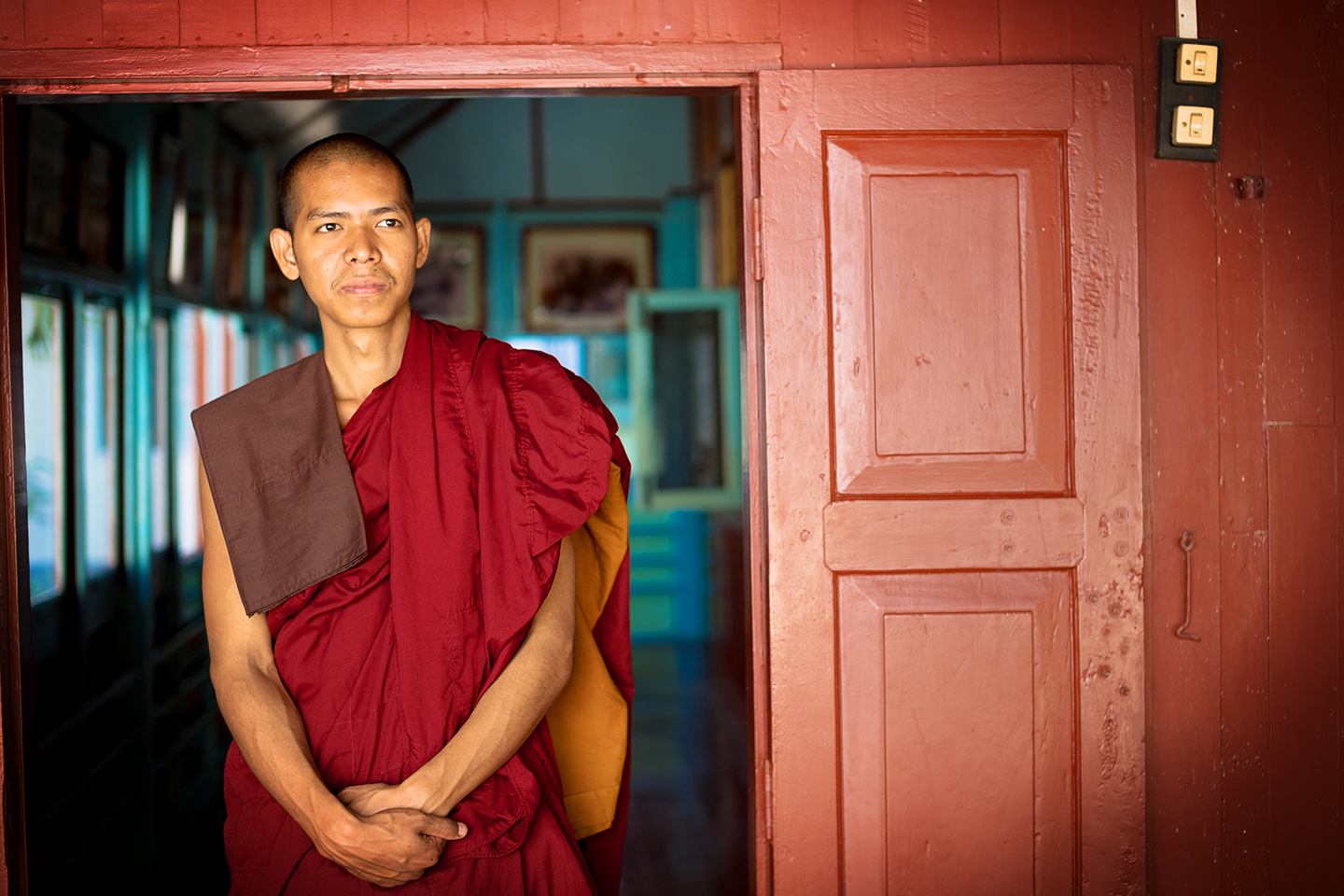 (evantravels/Shutterstock.com)
(evantravels/Shutterstock.com)
If a boy is over 20 years old and the first time for him to be a postulant, he can only be the Old Novice (known as “Koyin Gyi” in Myanmar language). This case usually happens because of the poverty of his family or some other unavoidable matters. As a Myanmar tradition, there will be another big occasion called Upasampada (known as “Yahan Khan Shin Pyu” in Myanmar language) which is kind of upgrade from being the novice to the monk (the men have to be over 20 years old and been a novice at least once in his life before). Most of the procedures are nearly the same as the Ceremony of Novitiation but the ordinands have to go into the ordination hall at the next morning with the 5 senior monks, pay homage to the Buddha and do the chanting. All the monks are supposed to obey the list of the 227 rules of Patimokkha (4 Parajikas, 13 Samghadisesas, 2 Aniyatas, 30 Nissaggiyas, 92 Pacittiyas, 4 Patidesaniyas, 75 Sekhiyas and 7 Adhikaranasamathas) which is a lot much more than being a novice. Those two ceremonies don’t have to celebrate separately and the people usually celebrate all together at the same time. Sometimes, there will also be some girls who are celebrating their Ear Piercing Ceremony (known as “Nar Tha Ceremony” in Myanmar language) together with the Novitiation Ceremony. Traditionally, the girls usually wear the ancient royal princess costumes with the ornaments made with different kinds of precious stones, the sparkling jewelry and the beautiful headdress. The pure gold needles were used to pierce their ear lobes so that they can wear the earrings when they become the adults. But the piercing guns are using in the modern days. Moreover, the ceremony of the decoration, size, and invited guests expresses the social status of the family who arranges the event. In, Myanmar, there sometimes has communal ceremony of hundred to thousand postulants which sponsored and arranged by a well-known abbot or famous person or rich individual or group. That’s why Myanmar society is coalesced by the spirit of the religious ceremony.
Review

Be the first to leave a review.
 English
English 日本語
日本語 မြန်မာ
မြန်မာ 汉语
汉语 國語
國語 ภาษาไทย
ภาษาไทย
